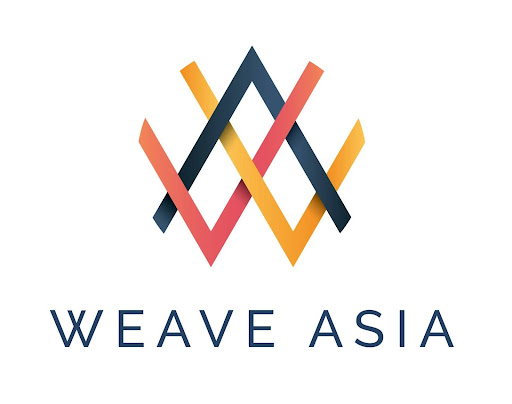Every expense matters when you’re a business owner. The world of web design can feel overwhelming – costs, technical jargon, endless choices, and the pressure of making a lasting first impression.
But here’s the truth: a good website isn’t just a ‘nice-to-have.’ It’s a lifeline, your digital storefront, and often the first touchpoint with your audience.
A website that represents your brand can turn curious visitors into loyal customers. It goes beyond looking good; it’s about standing out, connecting, and converting.
At Weave Asia, we get it. We’ve helped small businesses across the region create websites that do more than look good – they drive results. And if you’re wondering how to get there, this guide breaks it down step-by-step so you can feel confident in creating a website that speaks for your brand. Most importantly, a website that meets your audience’s needs.
Why Web Design Matters for Small Businesses
In the digital age, your website is often your first impression. And just like a storefront, it should capture attention and invite customers in. Here’s why web design for small businesses is crucial:
Builds Credibility
A professionally designed site shows customers that you’re serious and trustworthy. With so many scams out there, trust is key.
Increases Reach
An optimised, responsive website makes it easy for local and international customers to find you.
Drives Sales
Your website should do more than just inform. It should convert visitors into customers, subtly guiding them to take action.

The Visual Side of Web Design: Layout, UI, and Aesthetics
There’s more to web design than just making your site ‘look pretty.’ It’s about creating an engaging, professional digital experience that’s as functional as it is attractive. Here’s what goes into it:
Layout and Structure
Think of layout as the backbone of your website. It’s about organising your pages so visitors can find what they’re looking for without getting lost.
Hierarchy and Flow
Important sections like “About Us” or “Contact” should be easy to locate. The layout should lead users smoothly from one section to the next.
White Space
White space, or “negative space,” gives content breathing room and improves readability.
Consistency
Stick to a consistent style throughout the site, using the same fonts, colours, and button designs for a cohesive look.

Visual Elements
Aesthetics make a strong impression, but visuals also need to serve a purpose.
Brand Colours
Choose colours that reflect your brand’s identity and evoke the right emotions in visitors.
Typography
Use clear, readable fonts that match your brand’s tone.
Images and Graphics
Invest in quality images that authentically represent your business. Real photos (like your team or products) add a personal touch that resonates.

User Interface (UI)
A user-friendly interface is key to creating a positive browsing experience.
Button Design
Ensure buttons are visible and action-oriented. A bold, inviting CTA button guides users to take the next step.
Navigation Menus
Make your navigation intuitive. Place the most important pages in your main menu and keep things easy to find.
Forms and Contact Options
Keep forms simple and straightforward with only essential fields to reduce friction for users.

Key Components of Successful Web Design for Small Businesses
Let’s look at what goes into building an effective website. This isn’t solely about flashy visuals but includes components that ensure your website performs as well as it looks.
User-Friendly Navigation
When visitors arrive on your site, they need to find what they’re looking for without frustration. Organise your menus simply and logically.
Example: If you’re a cafe, categories like “Menu,” “Locations,” “Events,” and “Contact” should be prominent
Responsive and Mobile-Friendly Design
In Singapore, almost everyone is browsing on the go. Responsive design ensures that your site adjusts seamlessly to mobile and tablet screens. Not only does this keep users happy, but Google also rewards mobile-friendly websites with better search rankings.
Engaging Visuals with Purpose
Invest in quality images and graphics that reflect your brand’s essence. And remember, visuals should serve a purpose, not distract. Too many animations and pop-ups can turn visitors off.

Fast Loading Times
Did you know? A delay of even a second in loading time can lead to a drop in conversions. Keep image sizes manageable, optimise codes, and consider a good hosting provider to avoid slow loading times.
Optimising Your Site for Search Engines (SEO)
Picture setting up a stunning shop in a remote location. If no one can find it, it doesn’t matter how great it looks. SEO is the digital map that guides customers to your doorstep.
Keyword Strategy for Small Businesses
Using keywords like “affordable jewellery for small gifts” or “small business selling eco-friendly crafts” in strategic places like meta descriptions, headings, subheadings, and image descriptions can improve visibility.

On-Page SEO
Simple techniques like meta descriptions, alt tags, and using clear, descriptive URLs make your website easier to find. On-page SEO is an ongoing process that adapts to trends, ensuring that your site stays visible to your audience.
If your target audience is local, focus on local SEO strategies. Add your business address, set up a Google My Business account, target local SEO keywords, and encourage local reviews to help people find you online.
Content: The Heart of Web Design
A website isn’t complete without valuable, engaging content. Good web design seamlessly integrates with well-crafted content to tell your story and offer solutions to your customers’ needs.
Engaging Headlines and Copy
Headlines and text should be direct, clear, and customer-centred. Instead of “About Us,” try something like “Discover Our Story,” which invites curiosity.
Clear Calls-to-Action (CTAs)
Your CTA is your invitation for customers to act. CTAs like “Get a Free Consultation,” “Shop Now,” or “Book a Call” should be prominent on your homepage.

Blogging for Relevance
If your site includes a blog, use it to educate, inspire, and establish authority. Articles that answer customer questions and provide informational content, like “How to Choose the Perfect Handmade Gift for Any Occasion,” can improve SEO and build trust.
Security Matters: Keeping Your Customers’ Data Safe
A trustworthy website doesn’t just look credible – it is credible. Here’s how to build trust with customers:
SSL Certificates
Sites with SSL certificates (the little padlock next to the URL) rank higher and reassure customers that their data is safe.
Regular Updates and Backups
Updating plugins and software often strengthens security. Scheduled backups help you recover quickly if something goes wrong.
Web Design Mistakes Small Businesses Should Avoid
Building a website for your small business comes with unique challenges. Here are some common pitfalls to watch out for so you can create a user-friendly, professional site that truly represents your brand.
Overloading with Features
Simplicity is key. Too many plugins, pop-ups, or videos can slow down your site, distracting from your main message.
Ignoring SEO from the Start
SEO isn’t an afterthought. It should be part of the design process to ensure that your site doesn’t just look good but also ranks well.
Forgetting the User Journey
Think about what a visitor would want to see first, second, and third. Ensure each page has a logical flow that guides users toward your CTA.
Neglecting Mobile Optimisation
With more people browsing on their phones, a non-mobile-friendly site is a major deterrent. If users have to zoom in, struggle with small buttons, or find pages misaligned, they’re likely to leave. Make sure your site is responsive so it looks and functions well on any device.
Using Low-Quality or Overly Stock Images
Photos should enhance credibility, not detract from it. Overly generic stock images can make your site feel impersonal, while low-quality photos reflect poorly on your brand. Invest in high-resolution, authentic visuals that reflect your business accurately.
Missing Clear CTAs (Calls to Action)
Your visitors shouldn’t be left guessing about what to do next. CTAs should be clear, prominent, and direct. Whether it’s “Book a Consultation” or “Shop Now,” guide your users toward taking action by placing CTAs strategically on every page.
Overcomplicating the Navigation
If users struggle to find essential pages, they’ll likely move on. Avoid overly complex menus or hidden links. Simplify your navigation so users can reach important sections – like “About,” “Contact,” and “Services” – with minimal clicks.
Failing to Update Content Regularly
An outdated site with stale content gives a poor impression. Regularly updating your blog, product info, and service offerings keeps your site relevant and helps with SEO. An active site suggests that your business is engaged and current.
Disregarding Accessibility Standards
An inclusive site means considering accessibility. This is like adding alt text to images for screen readers, using readable fonts, and avoiding colour combinations that may be difficult for some users to see. Making your site accessible can increase your reach and improve the user experience for everyone.

How Weave Asia Can Help Transform Your Website
Creating a website that captures attention and converts leads requires more than a DIY template. At Weave Asia, we don’t just build websites; we build experiences that drive results.
Customised Solutions
From small e-commerce businesses to service providers, we design websites tailored to your brand’s unique goals.
Our team ensures your site is optimised from the start, helping you rank higher and reach your ideal customers faster.
Ongoing Support
Web design isn’t a one-and-done process. As trends shift and your business grows, we’re here to support you.
Ready to Create a Website That Works for Your Small Business?
Imagine a website that isn’t just a digital business card but a tool that drives engagement, builds relationships, and grows your business.
We’re here to do more than just create a website for you. We’re here to help you create an experience, a connection, a strategy. A website that doesn’t just say, “We’re here” but shouts, “We’re ready for you!”
If you’re ready to take your online presence seriously, reach out to us. Because your small business deserves a website that’s as committed to growth as you are.
Interested to read more about SEO and digital marketing tips for your business? Come and check out our blog section!











